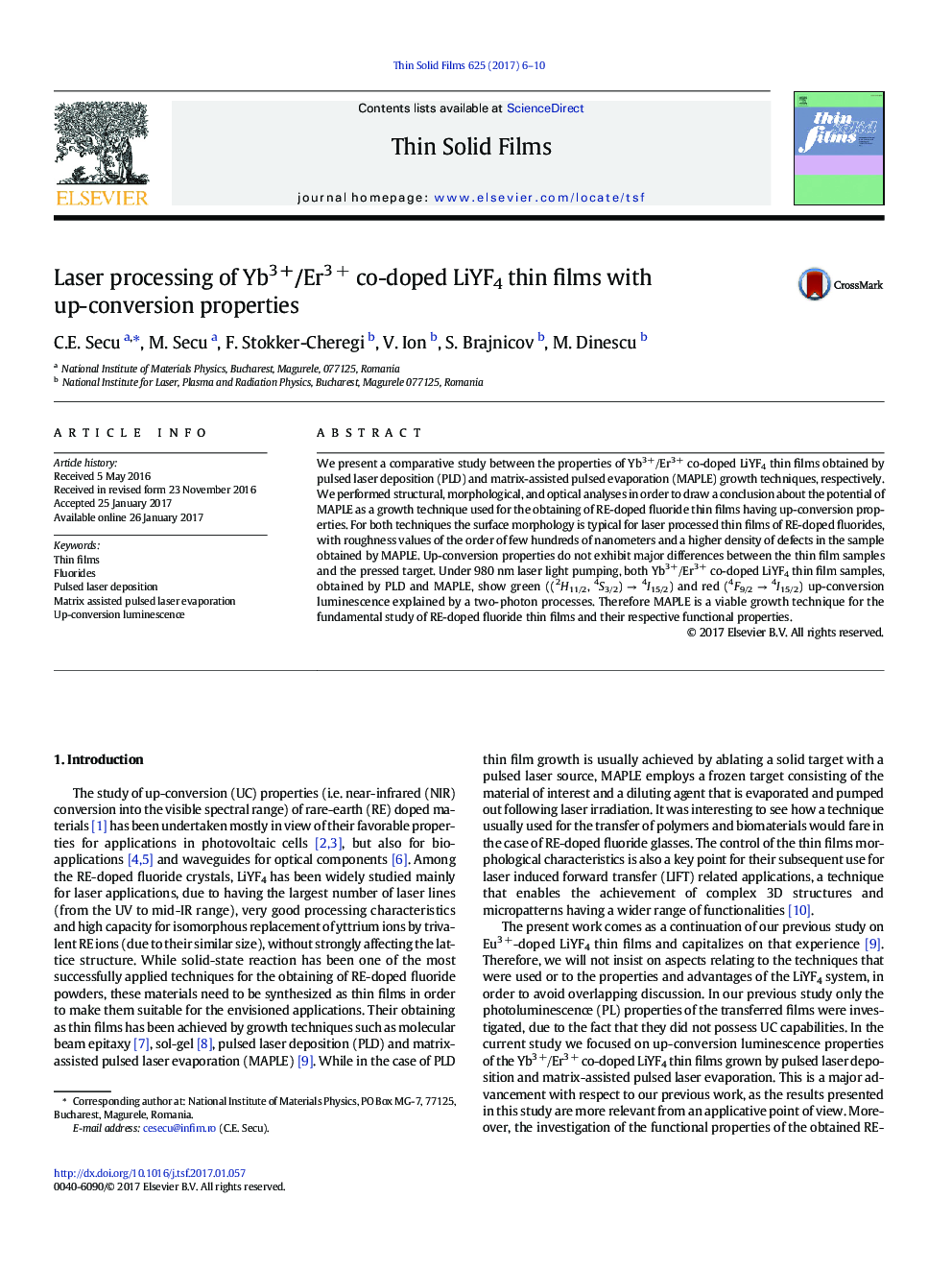| Article ID | Journal | Published Year | Pages | File Type |
|---|---|---|---|---|
| 5466321 | Thin Solid Films | 2017 | 5 Pages |
â¢(Yb3 +/Er3 +):LiYF4 thin films have been obtained by PLD and MAPLE techniques.â¢Surface morphology shows roughness values of about hundreds of nanometers.â¢Up-conversion luminescence is due to Er3 + ions through a two-photon processes.â¢Up-conversion properties are similar for thin films and target.
We present a comparative study between the properties of Yb3 +/Er3 + co-doped LiYF4 thin films obtained by pulsed laser deposition (PLD) and matrix-assisted pulsed evaporation (MAPLE) growth techniques, respectively. We performed structural, morphological, and optical analyses in order to draw a conclusion about the potential of MAPLE as a growth technique used for the obtaining of RE-doped fluoride thin films having up-conversion properties. For both techniques the surface morphology is typical for laser processed thin films of RE-doped fluorides, with roughness values of the order of few hundreds of nanometers and a higher density of defects in the sample obtained by MAPLE. Up-conversion properties do not exhibit major differences between the thin film samples and the pressed target. Under 980 nm laser light pumping, both Yb3 +/Er3 + co-doped LiYF4 thin film samples, obtained by PLD and MAPLE, show green ((2H11/2, 4S3/2) â 4I15/2) and red (4F9/2 â 4I15/2) up-conversion luminescence explained by a two-photon processes. Therefore MAPLE is a viable growth technique for the fundamental study of RE-doped fluoride thin films and their respective functional properties.
